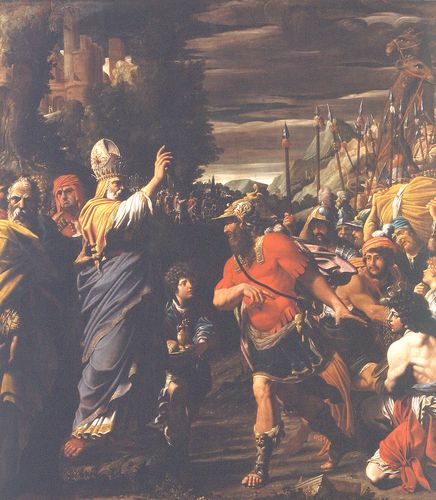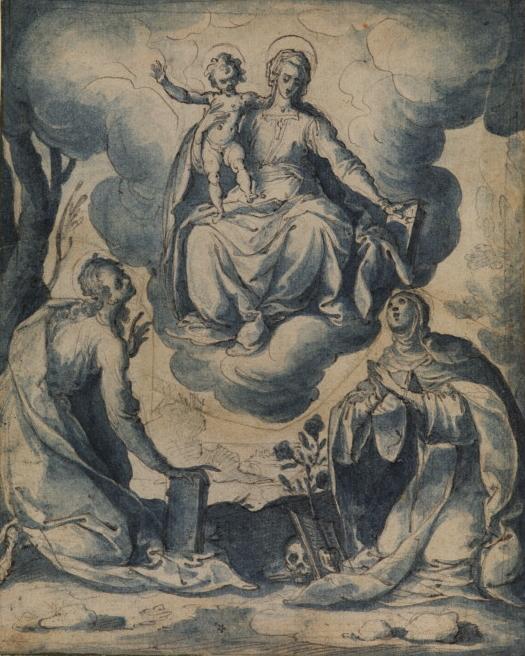Leonello Spada (1576 – 1622)
Get a Spada Certificate of Authenticity for your painting (COA) for your Spada drawing.
For all your Spada artworks you need a Certificate of Authenticity (COA) in order to sell, to insure or to donate for a tax deduction.
Getting a Spada Certificate of Authenticity (COA) is easy. Just send us photos and dimensions and tell us what you know about the origin or history of your Spada painting or drawing.
If you want to sell your Spada painting or drawing use our selling services. We offer Spada selling help, selling advice, private treaty sales and full brokerage.
We have been authenticating Spada and issuing certificates of authenticity since 2002. We are recognized Spada experts and Spada certified appraisers. We issue COAs and appraisals for all Spada artworks.
Our Spada paintings and drawings authentications are accepted and respected worldwide.
Each COA is backed by in-depth research and analysis authentication reports.
The Spada certificates of authenticity we issue are based on solid, reliable and fully referenced art investigations, authentication research, analytical work and forensic studies.
We are available to examine your Spada painting or drawing anywhere in the world.
You will generally receive your certificates of authenticity and authentication report within two weeks. Some complicated cases with difficult to research Spada paintings or drawings take longer.
Our clients include Spada collectors, investors, tax authorities, insurance adjusters, appraisers, valuers, auctioneers, Federal agencies and many law firms.
We perform Leonello Spada art authentication, appraisal, certificates of authenticity (COA), analysis, research, scientific tests, full art authentications. We will help you sell your Leonello Spada or we will sell it for you.

Leonello Spada was an Italian painter of the Baroque period, active in Rome and his native city of Bologna, where he became known as one of the followers of Caravaggio. He is also called Lionello Spada.

He first apprenticed with painter Cesare Baglioni. By the early 1600s, Spada was active, together with Girolamo Curti, as a member of a team specializing in decorative quadratura painting in Bologna. His early independent canvases reflect a mannerist style akin to the Bolognese Denis Calvaert. In 1604 he made an unsuccessful bid for the commission to decorate the sacristy of the Basilica di Loreto. By then he had already gravitated to the Carracci Academy, having contributed to the decorations for the funeral of Agostino Carracci in 1603. His earliest surviving major painting, the altarpiece of the Virgin and Saints Dominic & Francis Interceding with Christ (1604), shows that he had modeled his style on that of Ludovico Carracci. He frequently collaborated with other students of Ludovico, especially Francesco Brizio and remained in Bologna until 1607. Spada’s figurative style gradually became more robust, as shown by the Miraculous Draught of Fishes (1607).

Whether Spada either met or became an assistant of Caravaggio, like Manfredi, is unclear. The biographer Malvasia makes plain in his Felsina pittrice his distaste for Caravaggio, and apparently describes Spada and Caravaggio as equally “dissolute” and “precipitous”; and there are suggestions that for Caravaggio, Spada was a man “close to his heart”, and perhaps not metaphorically. Malvasia also tells the story of Spada posing for Caravaggio’s ”Death of John the Baptist”: afraid that Spada might flee and, that without a model the painting would be incomplete, Caravaggio imprisoned him in a room until he had finished. However, it is unclear if Spada ever physically encountered Caravaggio in Rome. Spada supposedly was in Rome after 1608-9, when Caravaggio had fled to Malta. Malvasia suggests the Spada followed Caravaggio to Malta. This is possible since Spada himself painted frescoes in the Magisterial palace of Valleta in 1609-1610; but Caravaggio again had fled to Sicily by 1608, thus their overlap in Malta must have been short. The dark violence of a painting such as the Cain Killing Abel (Capodimonte) and his derivative realism Musical Concert garnered him in Bologna, the maligning appelation of “scimmia del Caravaggio” (ape of Caravaggio).

But this, as much of Spada’s output, may not reflect a gathered flame of inspiration but a pale reflection, a mimicry of the harsh passion, which when linked to his Carraci upbringing leads to a weakened pastiche. Leonello Spada is known to have made many copies of other painters.

He painted a large canvas for the Basilica of San Domenico in Bologna, depicting St Dominic Burning the Books of the Heretics, (1616). The Ghiara frescoes are perhaps his masterpiece and demonstrate a return to Carraccian models. Other works of this fruitful period include the Return of the Prodigal Son and Aeneas and Anchises (both at Louvre).
In 1617, he was commissioned by Duke Ranuccio I (Farnese) to decorate the newly built Teatro Farnese for Parma. His ”Mystic Marriage of St Catherine’ (1621; Parma, San Sepolcro) is a late painting. Still wondering about an Italian painting in your family collection? Contact us…it could be by Leonello Spada.
Reviews
1,217 global ratings
5 Star
4 Star
3 Star
2 Star
1 Star
Your evaluation is very important to us. Thank you.
